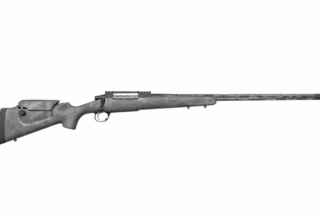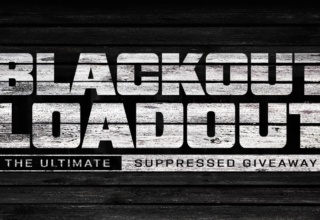Winter is a great time to hunt coyotes and foxes, and a slew of varmints. Most other hunting seasons have ended, and even on public lands there’s a very good chance you will have the area all to yourself. And if you are looking to make a little extra money from pelts? Colder winter temps create thick, prime fur.
Coyotes tend to receive the most attention this time of the year. Not surprising, considering that the hungry predators are roaming over large areas in search of prey, plus are in the middle of their mating season. But other varmints are out and about, too, especially on sunny winter days.
For this winter’s coyote and varmint hunting, I decided to put together a new combination: a Rock River Arms LAR-8 chambered in .243 Win, with a TruGlo Eminus 4-16x44mm scope mounted on it. Getting this setup ready also allowed me to brush up on my shooting skills and to remember a few varmint hunting basics.
The Hunting Rig
I love AR-style rifles for hunting, and Rock River Arms (RRA) produces some of the best hunting AR’s on the market today. Looking over their offerings, I saw that RRA had a new rifle, the LAR-8M .243 Win Predator HP. I ordered one immediately!
AR’s chambered in .243 Win have not gotten the attention they deserve, in my opinion. These are flat-shooting rifles, capable of long-distance shots, and have considerably more muzzle energy than their .223 Rem cousins. Not only are .243 Win’s fine coyote and varmint rifles. Switch to heavier rounds, and your “coyote” rifle is now a very efficient choice for deer and hogs, too.

The LAR-8M Predator has a 20-inch, fluted stainless steel barrel, and crisp RRA two-stage trigger, and an RRA winter trigger guard (larger size for gloved fingers). A low-profile gas block and a free float front rail with three smaller accessory rails round out the features. It’s also very accurate. I was able to shoot sub-MOA groups at 100 yards with no problem and relatively little practice.
The new Eminus Scope from TruGlo is rated as a “tactical” scope, but don’t let that label fool you. It’s every bit a hunting scope, and the 4-16 magnification lets you reach out long distance—without a huge price tag.
In my zeroing and practice with the scope, the Eminus pulled in a good deal of light, and presented clear images—up close and at distance–while the Illuminated TacPlex Reticle helped me get on target fast. The ¼ MOA windage and elevation adjustments were precise. The Eminus also comes with an APTUS-M1 mount, so there’s no need to buy extra rings or other mounting hardware.
For zeroing and practice for upcoming hunts, I used Federal’s American Eagle Varmint and Predator ammunition, firing a 75-grain JHP bullet.
Time to Practice
Once the rifle was zeroed at 50 and then 100 yards, it was time to practice some predator and varmint hunting. That was easy to do thanks to the Tru-Life targets I used from Delta McKenzie. Printed in full-color on heavy, 75 lb. paper, these targets are made to reflect the life-size dimensions of coyotes and varmints, plus feature scoring outlines defining the heart, liver, and lungs.
I used the Tru-Life targets in the Coyote, Groundhog and Skunk varieties at 100 yards, and found them very helpful. There’s nothing wrong with shooting at bullseye targets. But when you are going after wildlife, it’s good to know what that wildlife will actually look like in your scope and at various distances. And knowing where to place your shots? Priceless.
When I am practicing for winter predator and varmint hunting, I also make it a point to dress at the range as I will be dressing in the field. Yes, you can zero your hunting rifle indoors or during the warm summer months. But it’s a different shooting scenario firing a rifle when you are wearing a winter coat, a hat, gloves and several layers of clothing compared to tennis shoes, a tee-shirt and shorts. It can take some getting used to and figuring out how you may have to adjust your shooting positions with all this additional clothing
Other Gear
Ready to head afield? Not quite. The best way to get coyotes and foxes into shooting range is by the use of calls. There are many very good electronic and hand-held calls on the market today. But you will need a little practice before heading out.
Several shooting accessories can add to your hunting success, too. These include a good set of adjustable shooting sticks, a comfortable pad for sitting and quality binoculars to scan for those varmints.
Invest in some good camouflage clothing, too. Most predators and varmints have excellent eyesight, and will head in the other direction as fast as possible if they spot you.
Once you are afield, look for positions that provide both cover and good vantage points. I try to get up higher so I can see down and into brush and vegetation. When possible, I put a rock, bush or downed tree in front of me for added cover, too. I set my electronic call out ahead of me 40 to 50 yards, aiming the speakers out and away from me to cover the most ground.
- Winter’s The Right Time—For Coyote and Varmint Hunting - January 4, 2018















